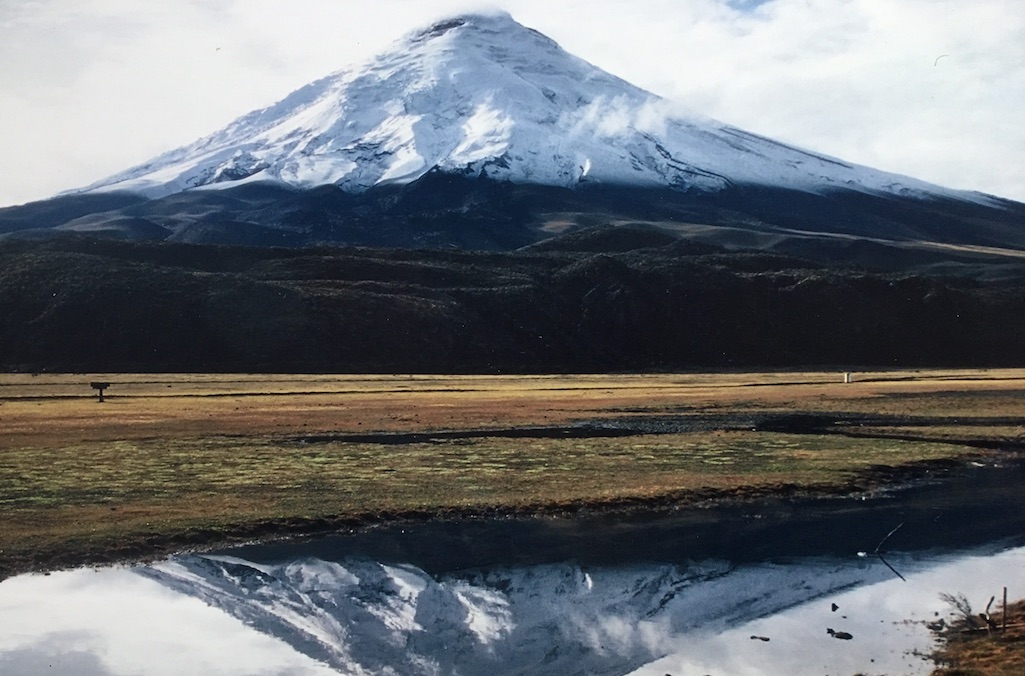To reach the summit of many of the highest mountains in the world requires years of experience, expensive equipment and months off work. Thankfully, for the vast majority of outdoor and wilderness enthusiasts, others can be reached even without the technical skills of a seasoned mountaineer. Indeed some of these "trekking Peaks" can fit nicely into a holiday.
If you don't necessarily have a great deal of experience at altitude such as the practical skills of mountaineering - ice axe, crampon or rope work, but want to set yourself the challenge of going up, instead of around mountains, then read our run-down of the world’s top non-technical climbs or "trekking peaks" as they are often referred to. From the snow-capped challenges on Himalayan slopes to desert ascents in North Africa, discover the perfect non-technical mountain that will inspire you all the way to the summit.
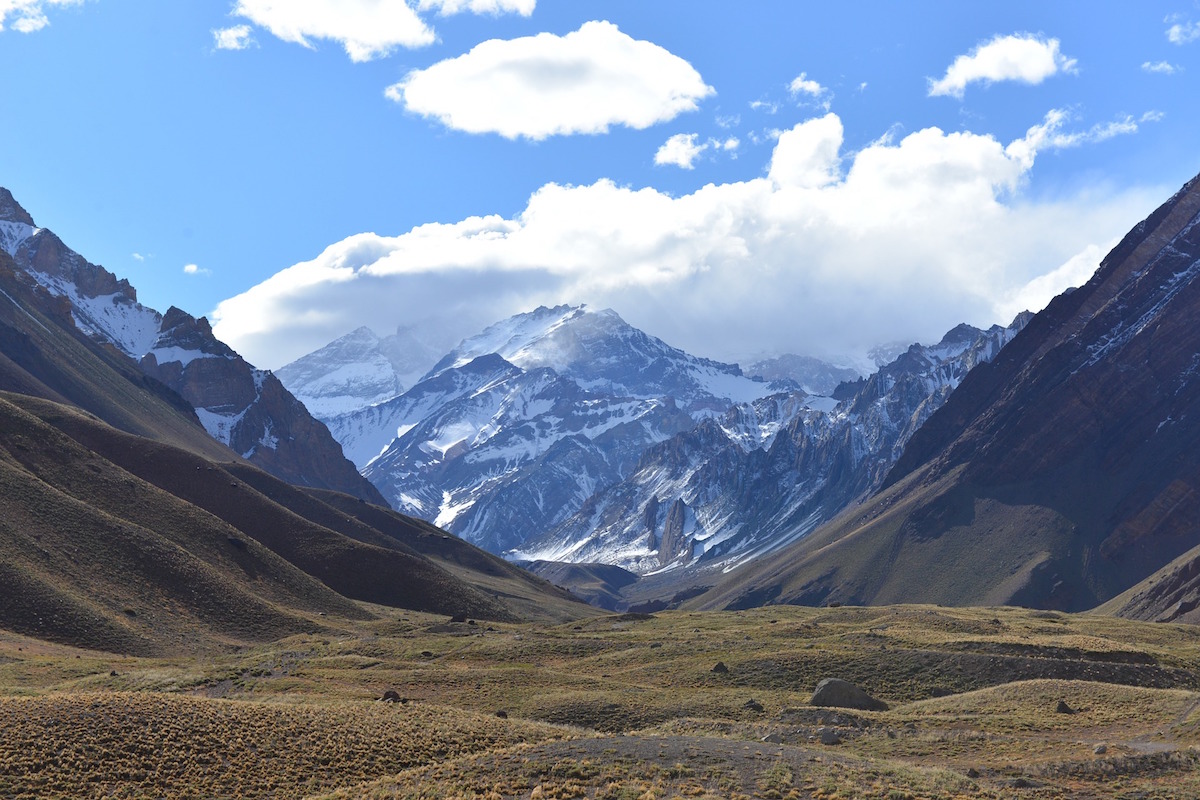
Aconcagua
Why is Aconcagua a Top Trekking Peak?
The world’s highest non-technical mountain—one of its many records—offers you the chance to walk to the top of the Western Hemisphere.
Details and location:
6,959 m (22,831 ft), Mendoza Province, Argentina, South America. Part of the Andes Range.
Best route: Normal Route – 8-12 hour summit day as part of a 13 day trek.
Tell me more.
Trekking from camp to camp you slowly ascend the twins peaks of this isolated mountain. And to go slowly is advisable – while the summit trek requires little more than crampons and ice axes, there is a genuine risk of altitude sickness at these elevations. After all, there is no higher peak outside the Himalayas than Aconcagua.
From the summit, you’ll gaze along the Andes Mountains, the spine of South America, stretching away to the north and south. While it is located close to the border with Chile, you may even spot the barren Argentinian plains far away to the east. Trekked in the summer months, this giant can be totally devoid of snow all the way to summit, though you’ll still need your crampons for the glaciers.
While non-technical, to reach the summit of this isolated peak is a challenge worthy of any adventurous trekker.
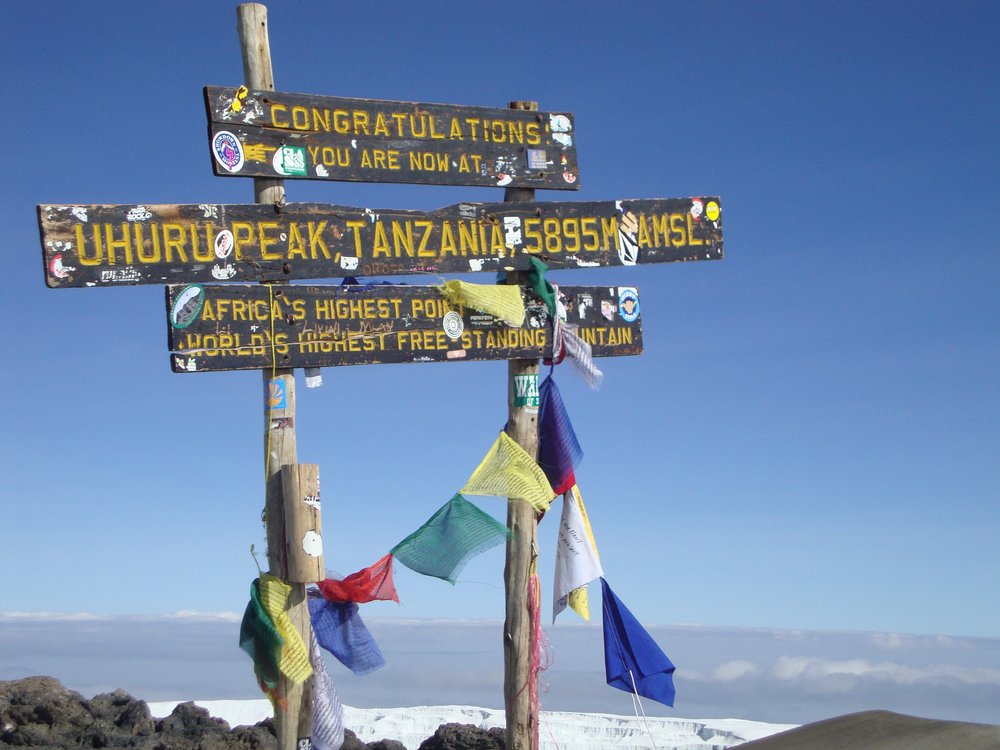
Kilimanjaro
Why is Kilimanjaro a Top Trekking Peak?
A steady incline through diverse landscape leads you to stand on the roof of Africa (and bag one of the Seven Summits too!)
Details and location:
5,895 m (19,341 ft), North-east Tanzania.
Best route:
Lemosho Route – 6-day trek to the roof of Africa.
Tell me more.
Africa’s highest peak and the world’s highest free-standing mountain, Kilimajaro, actually has three volcanic summits. The highest and one of the Seven Summits, Uluru Peak, offers spectacular views over Tanzania to the south. On a clear day, it is even possible to spot Mount Kenya (5,199 m/ 17,057 ft) to the north.
Diverse landscapes including rainforest, glacial valleys and alpine zones keep this summit trek interesting, taking you through five distinct temperate zones from start to finish. The steady incline of the Lemosho Route is recommended in order to slowly acclimatise to the high altitudes. Other treks up the mountain last anywhere from 5-10 days. Getting the right kit is crucial, as temperatures fluctuate wildly from day-to-night here.
It may be a walk-up, but don’t underestimate Kilimanjaro: only half of trekkers manage reach the roof of Africa.
Photo by sergejf
Ojos de Salado
Why is Ojos de Salado a Top Trekking Peak?
The world’s highest volcano, with a summit in two different countries, offers unbroken views of blue lakes, snow-capped mountains and distant plains.
Details and location:
6,893 m (22,615 ft)
Argentina/Chile border, South America. Part of the Andes Range.
Best route:
Ruta Normal – 9-11 hour summit day as part of a 5-7 day trek.
Tell me more.
Assuming you allow enough time to acclimatise, it is possible to drive to a refuge on the Chilean slopes up at 5,800 m (19,029 ft). But with little more than scree-covered slopes leading to Ojos de Salado’s snow-capped summit, many trekkers choose a longer adventure by beginning the summit trek near Laguna Verde at 4,400 m (14,436 ft).
The only technical section is a short climb immediately before the Chilean summit. The roped climbing required here is relatively easy and will make the summit feel that bit more earned. It’s best not to use the ropes that may be hanging from the summit block when you arrive – some have been there for a very long time.
Most treks on the peak are done with the support of mules and guides. Given the altitudes you’ll be climbing to, as well as the technical last section, it’s wise to follow suit. Go with a guide and you’ll reach the summit safe and sound to gaze at the spectacular scenery that surrounds you.
Photo by Kogo
Island Peak
Why is Island Peak a Top Trekking Peak?
Bagging a Himalayan summit doesn’t get easier than this: a snowy Island in an icy sky.
Details and location:
6,183 m (20,285 ft), Everest region, Nepal, Asia.
Best route:
South-east Flank/South-west Ridge Route – 8-10 hour summit day as part of a 2-4 day trek (from Chhukhung)
Tell me more.
In the shadow of Mount Everest (8,848 m/ 29,029 ft), Imja Tse, or Island Peak, offers up an ideal first Himalayan ascent. Named by Eric Shipton’s Everest exploration party in 1951, this peak rises like an island out of the surrounding icy landscape of the south ridge of Lhotse Shar (8,383 m/ 27,503 ft).
While it is classified as a trek, this is the Himalayas and ‘treks’ here also require at least a little basic mountaineering. Much of this route follows huge glaciers, and there will be thick snow on the ground for the final stretch to the summit. With deep crevasses, an icy final wall and a path that is only evident in patches, heading up this mountain with a local Sherpa guide is certainly advisable.
You’ll need ice axes, crampons and ropes for a safe trek. In return you’ll be guaranteed some exciting mountaineering stories (and boasts!) to take home with you.
Photo by Indra Rai
Mera Peak
Why is Mera Peak a Top Trekking Peak?
Climb a Himalayan mountain and learn the basics of mountaineering as you go. Oh, and get a perfect view of five of the world’s highest mountains as reward.
Details and location:
6,476 m (21,247 ft), Hindu Valley, Nepal, Asia. Part of the Himalayas.
Best route:
Standard Route – 10-14 day trek.
Tell me more.
The three-peaked, snow-capped Mera Peak offers unbeatable views of a stretch of mountains that includes Mount Everest (8,848 m/ 29,029 ft), Cho Oyu (8,021 m/ 26,909 ft) and Makalu (8,463 m/ 27,766 ft). This panorama is revealed to trekkers as they approach Mera Peak’s summit from the north, reward for the effort required to get there.
The multi-day trek includes sections of ice trekking over glaciers as well as a couple of short roped climbs. It is often used as a good introduction into mountaineering skills, so if you have aspirations to climb as well as trek to mountain summits, Mera Peak is the peak for you.
Going with a guide is essential, not only for the necessary technical support but also to judge the safety of the slopes. The main summit, Mera North, has a higher avalanche risk than the slightly lower Mera Central, so most guides will choose the latter option. Regardless, a professional guide will ensure you get to the top, and back down, safely and help you bag this Himalayan summit.
Cotopaxi
Why is Cotopaxi a Top Trekking Peak?
One of the simplest and most popular high-altitude climbs in South America will have you standing on top of the highest active volcano in the world.
Details and location:
5,897 m (19,347 ft), Ecuador, South America. Part of the Andes Range.
Best route:
Normal Route – 7-9 hour summit day as part of 3-5 day trek via Refugio Jose Rivas.
Tell me more.
This mountain is known locally as ‘the neck of the moon’, rising skywards with a near perfect symmetry to offer lunar support. This volcano (which has threatened recently to live up to its ‘active’ status), offers a straightforward trek for most of the route. The main refuge is even reachable by 4WD vehicles.
But higher up, Cotopaxi reveals its thrilling challenge. The glacier that wraps around its summit demands ice axes, crampons and a little prior experience on such terrain to safely navigate its frozen landscape. There’s even a short climb required an hour from the summit on the Normal Route, though 100 plus trekkers happily navigate this during weekends in peak season.
Rising out of the Ecuadorian landscape to touch the moon herself, Cotopaxi will have you hot under the collar—with excitement—as you trek for the summit.
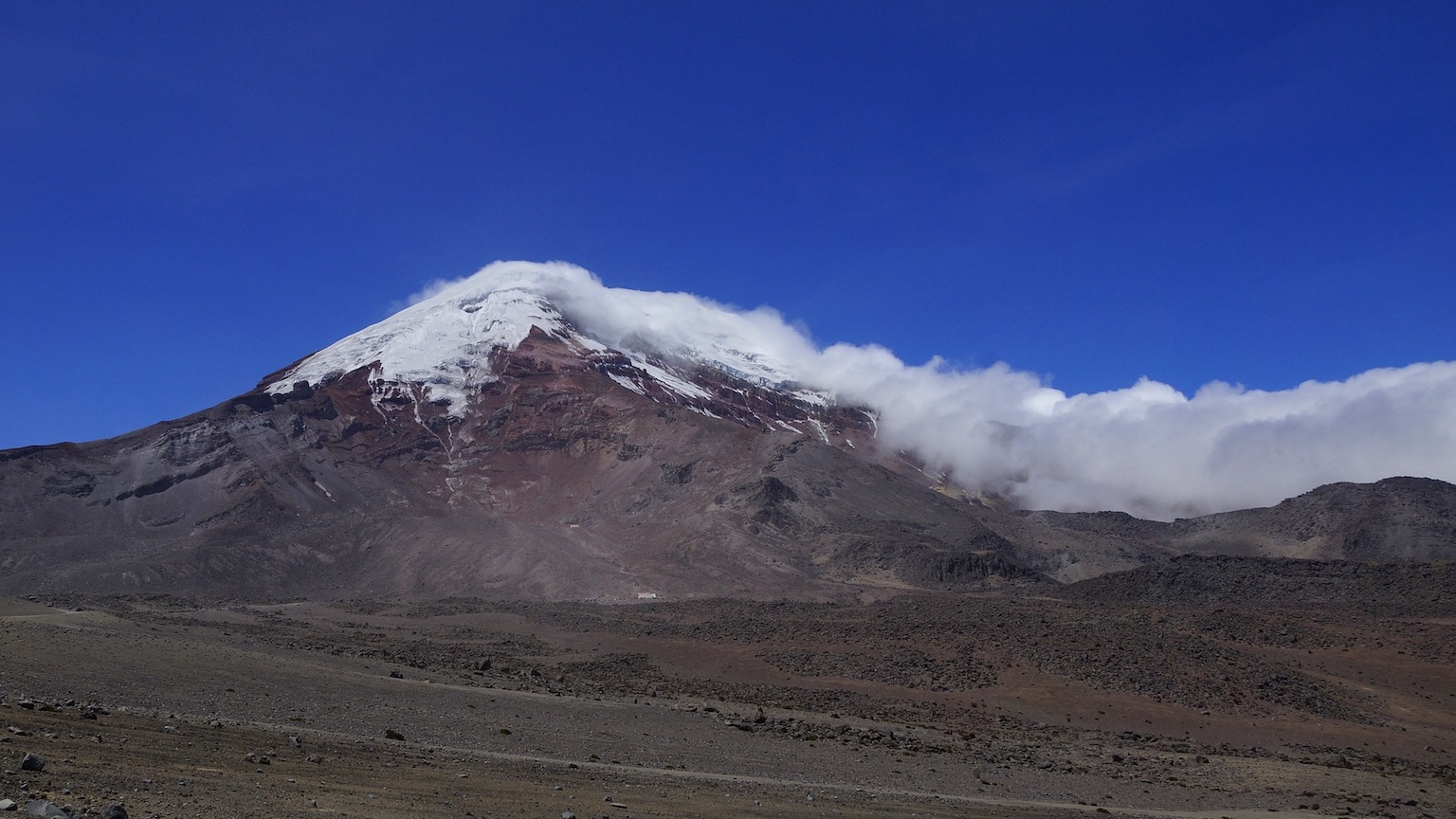
Chimborazo
Why is Chimborazo a Top Trekking Peak?
Want to stand on top of the world? By one measure you can do just that by reaching Chimborazo’s accessible summit.
Details and location:
6,310 m (20,702 ft), Ecuador, South America. Part of the Andes Range.
Best route:
Whymper/Normal Route – 11-15 hour summit day, as part of a 3-4 day trek.
Tell me more.
Less popular than nearby Aconcagua (6,959 m/ 22,831 ft), the summit of the ‘woman of ice’ is further from the centre of the Earth than any other point in the world. What’s more, head north through the Americas and you’ll find no peak taller. Despite these superlatives, you could be stood on Chimborazo’s summit with little more than a day’s trekking.
This South American mountain is wrapped in glaciers and, whatever time you attempt your summit trek, you’ll be sure to be walking part-way through snow. Ice axes and crampons are as technical as this peak gets though, as this mountain only requires you to walk, albeit up a very steep hill.
Be sure to allow plenty of time beforehand to acclimatise as this is a high-altitude trek.
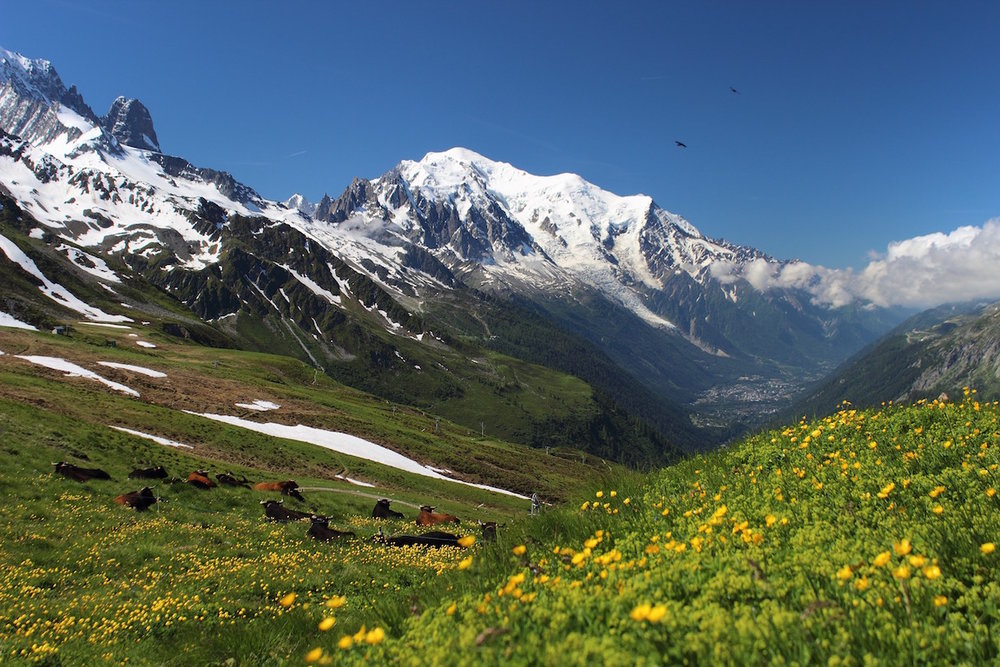
Mont Blanc
Why is Mont Blanc a Top Trekking Peak?
Reach the summit of Europe’s most famous range and stand on top of the mountain that helped defined modern mountaineering.
Details and location:
4,810 m (15,872 ft), Spans France, Italy and Switzerland, Europe. Part of the Alps.
Best route:
Voie de Cristalliers/Gouter Route – 6-8 hour summit day as part of a 2-3 day trek via the Gouter Refuge.
Tell me more.
The ‘White Mountain’ may well be one of the best-served mountains in the world, with the Tour de Mont Blanc and Chamonix attracting thousands of trekkers and skiers respectively each year, but reaching its summit is no walk in the park.
Decent fitness, experience in ice trekking and a little mountaineering knowledge go a long way to getting you to the very summit of the Alps. The trek to the top of Mont Blanc typically begins from the top of the cable car Nid d’Aguille and includes sections with cabled handrails, crevasses and lots and lots of snow. Rockfall is well known in the infamous Grand Couloir, and the exposed final stretch will test your crampon technique along the summit ridgeline.
With the high altitude refuges open only in the summer months (June-September) and demand high, make sure you plan ahead to reach the top of Europe’s premier peak.
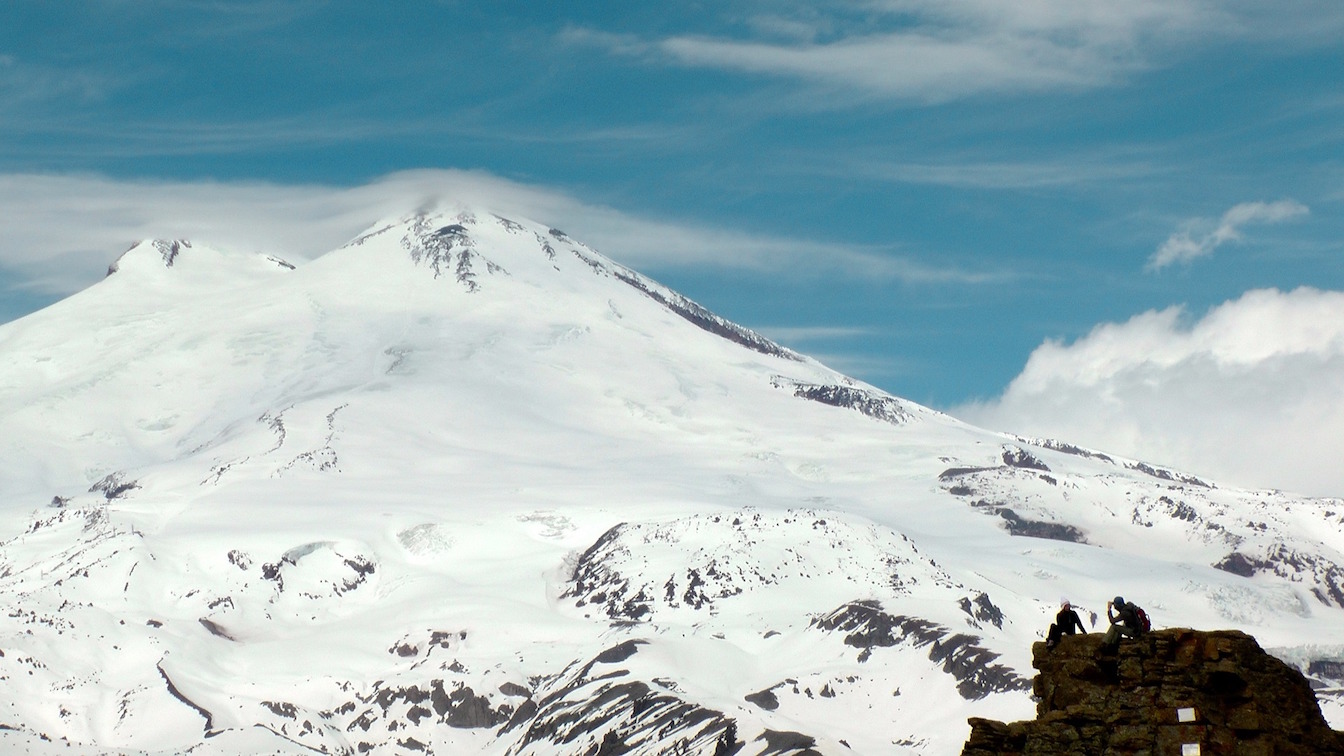
Mount Elbrus
Why is Mount Elbrus a Top Trekking Peak?
Walk to the top of Europe and bag yourself another of the Seven Summits.
Details and location:
5,643 m (18,514 ft), Russia, Europe. Part of the Caucasus Mountains.
Best route:
Standard Route – 10-15 hour summit day as part of 3-4 day trek via the Barrel Huts.
Tell me more.
Near the border with Georgia, this twin-peaked Russian mountain rises higher than any other peak on the continent. Yet the challenge of Mount Elbrus is actually less the actual trek to the summit (though strong winds and snow can make an ascent tricky enough) and more getting onto the mountain in the first place!
The ‘High Sentinel’ stands alone as an ultra-prominent peak in a landscape often coated in snow. But its slopes are best guarded by often painfully slow Russian red tape. Trekking with recommended local guide is an essential for getting to, as well as up, this mountain. While the route can be very busy (and dirty) in peak season, you’d be advised never to deviate from the path. Unseen crevasses lead to several dozen deaths annually.
Mount Elbrus poses some challenges of a different kind, but stick to the path and you’ll reach the top of Europe in a matter of days.
Photo by James Edward Ball
Stok Kangri
Why is Stok Kangri a Top Trekking Peak?
Walk to the top of a Himalayan giant standing far from your typical tourist map.
Details and location:
6,153 m (20,187 ft), Ladakh, India, Asia.
Best route:
Stok Valley Route – 8-14 hour summit day as part of an 6-8 day trek from Leh.
Tell me more.
A path less trodden (and less steep) than other Himalayan trekking peaks, only the very summit retains snow in summer, so you can even leave your crampons at home. From the summit of Stok Kangri, you’ll enjoy views of the Karakoram Range to the north and the Zansker Range and Indus Valley to the south.
Despite the comparative ease of this trek, sufficient acclimatisation is the often overlooked key to a successful ascent. While the summit day may be a simple return to and from Base Camp, without several days getting used to the high altitudes beforehand it’s unlikely you’ll make it to the top. Disrespect the altitude and you’ll be heading back down the mountain summit-less and disappointed.
Be sure to bag this summit soon – its popularity is growing so the peaceful experience it promises may not last forever.
Photo BY-SA
Mount Toubkal
Why is Mount Toubkal a Top Trekking Peak?
Climb a mountain in the desert and explore slopes (probably) walked since the dawn of man.
Details and location:
4,167 m (13,671 ft), South-west Morocco, North Africa.
Best route:
Normal Route – 2-3 day trek.
Tell me more.
The highest peak in the Atlas Mountains sits in a national park bearing its own name. Two main routes lead up to the summit of Mount Toubkal (the South Cwm Route being simpler and so more favourable to most) both ascending over 3,500 m (about 11,500 ft) from Imlil to the summit. Many of these slopes will have been walked long before the rise of European alpinism, with the local indigenous Berber tribesmen using the peak as part of ancient hunting trips.
Altitude sickness is the main threat to a successful summit trek, so slow and steady is the advice to win this race. High heat and beating sun in the days becomes plummeting temperatures at night in this high desert landscape. The paths can also be a bit rough (invest in some good boots) and hard to follow in places with boulders and rocks littering the orange-tinted, sandy earth. In the winter, this becomes a snow trek and going with a guide becomes more advisable.
The only North African entry on our Top Trekking Peaks list, this summit offers a unique perspective on a desert landscape amid the ancient Atlas Mountains.

LATEST BLOG POSTS
I quit the rat-race to live a more adventurous life. This is my journey.





